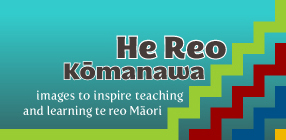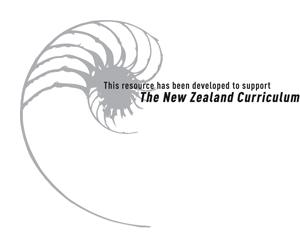
ImageTeaching and learning sequenceAdditional tasks and activities
Sample Task Sequence 3: Kākā
Digital resource from the Te Papa Collection
Image: Kākā chromolithograph, 1888


Copyright: Reproduced courtesy of the Museum of New Zealand Te Papa Tongarewa
Creator: John Gerard Keulemans, artist, 1888
Identifiers: Museum of New Zealand Te Papa Tongarewa number l.006419. TLF resource R4202
Source: Museum of New Zealand Te Papa Tongarewa, http://www.tepapa.govt.nz
Students should be able to (4.3) communicate about obligations and responsibilities.
Links to other learning areas
The arts (visual arts), science
Te reo Māori text
Nō Aotearoa ēnei manu. He kākā ngā manu nei. Kei runga i te rākau rata ēnei kākā. Kotahi te kākā whero, kotahi te kākā parāone. Nō te tau 1888 tēnei whakaahua, nō rēira, he pikitia tawhito. I ngā wā o mua, he maha ngā kākā, engari i nāianei kei te torutoru haere. Te take e torutoru haere ana ngā kākā, kei te kainga ngā hēki me ngā pīpī manu e ngā paihama, e ngā wīhara hoki. Nō rēira, manaakihia ēnei manu mīharo.
Statements: Kei te tika/Kāore i te tika
1. E rua ngā kākā i te whakaahua nei.
2. He whero ngā kākā e rua.
3. Nō Ahitereiria te kākā.
4. I nāianei, ka kitea ngā kākā i ngā wāhi katoa o Aotearoa.
5. He reka ngā pīpī o te kākā ki te paihama me te wīhara.
6. Me manaakihia e tātou te kākā.
Teaching and learning sequence
When appropriate, the teacher shares the intended learning outcomes with the students and negotiates success criteria with them. The teacher and students discuss these throughout the teaching and learning sequence.
1. Viewing of image
The students view the image: Kākā chromolithograph, 1888.
2. Pre-reading discussion
The students work in pairs or groups of four, discussing the image and sharing any information they know about kākā. If discussion in te reo Māori is beyond them, they could conduct their discussion mainly in English and simply make a word bank of relevant te reo Māori vocabulary. The teacher then leads a class discussion and asks questions such as whether the students have seen kākā, where they saw them, and whether kākā are present in the local area.
The questions and discussion could be in te reo Māori and/or English. The teacher records key new te reo Māori vocabulary to create a class word bank.
3. Reading te reo Māori text
The students read the text silently, but are free to discuss any areas of difficulty in their pairs or small groups. If they are still unsure of some words after they have shared their ideas and tried to work out the new vocabulary, they may consult a dictionary. After the reading, the teacher encourages them to use a dictionary to confirm their guesses.
4. Teacher clarification
The teacher draws attention to new vocabulary and grammar and clarifies any remaining uncertainties.
5. Pair interactive task
In pairs, the students take turns to read the Kei te tika/Kāore i te tika statements. The listener says “Kei te tika” if the sentence is correct or “Kāore i te tika” if it is wrong. If it is wrong, the same student must correct the error. For example, Statement 4 is “I nāianei, ka kitea ngā kākā i ngā wāhi katoa o Aotearoa”. This statement is wrong, so the student says “Kei te hē” and corrects the statement. The correction may be made in any of the following ways:
- by following the sentence pattern of the statement, but with the error corrected (for example, “I ngā wā o mua, ka kitea te kākā i ngā wāhi katoa o Aotearoa”);
- by using an appropriate sentence from the text (for example, “I ngā wā o mua, he maha ngā kākā, engari i nāianei, kei te torutoru haere”); or
- in the student’s own words (for example, “Kāore e kitea ngā kākā i ngā wāhi katoa i nāianei, nā te mea kei te torutoru haere”).
When the students have completed the list of statements, they make up some Kei te tika/Kāore i te tika statements of their own for their partner to respond to. The ideas for these could come from their own knowledge and/or from the text.
6. Group mind mapping
Working in groups of four, the students make a mind map of what they collectively know about the kākā. This mind map is kept safe, as it will be used later, with additional information, in the presentation.
Download example mind map (.pdf)
7. Inquiry
Facilitated by the teacher, the students discuss what other information they want to find out about the kākā. Topics for the inquiry might include:
- Other birds in the kākā whānau, both native and non-native
- Other endangered native birds
- Conservation initiatives that work to save kākā and other endangered birds
- Initiatives that the students can take to support the survival of endangered birds.
Each group forms a written question on which to focus their inquiry and then each student makes an inquiry plan that identifies how they will seek answers to their question. This might be through reading (using the library or Internet), museum visits, or interviewing whānau members or kaumātua who have knowledge of kākā and their habits and former habitats in the district. While the teacher provides support and oversight, the students undertake at least part of their inquiries for homework. They make written notes in which they record keywords and simple sentences in te reo Māori, and they bring these notes to school.
8. Addition of information to group mind maps
The class discusses the criteria for an effective mind map. Then, in their groups, the students pool the results of their inquiries and discuss how their findings can be incorporated into their group mind maps. This involves group discussion and the synthesis, prioritisation, and organisation of information. As the students work, the teacher circulates, helping with vocabulary and encouraging the students to kōrero Māori.
9. Presentation
The teacher selects a method of presentation, perhaps choosing from one of the five suggestions in this resource.
10. Reflection
The students have 10 minutes to reflect individually on what they have learned from this cycle of learning. They briefly record the following information in te reo Māori:
- Tuhia ngā kupu hou. (List the new vocabulary you learned.)
- Tuhia tētahi whakaaro hou i akongia e koe. (Write one new thing you learned from your own inquiry.)
- Tuhia ngā whakaaro e toru hei manaaki i te manu kei te kore haere i tēnei ao. (Write three things you can do to help save endangered birds.)
The students follow this with pair reflection, and then class reflection, about the new language forms they learned during this teaching and learning sequence. The teacher encourages them to consider whether they felt confident about using the new language and whether they feel their goals were met. The students finish by setting personal and class goals for the next sequence of teaching and learning.
Additional tasks and activities
Depending on their students’ needs and interests, teachers may like to select from some of the following tasks and activities:
- Explore whakataukī that refer to kākā (for example, “He kererū ki te kāinga, he kākā ki waho”.)
- Research and dramatise traditional stories featuring kākā, with all the dialogue in te reo Māori.
- Create labelled diagrams of kākā, with all labels in te reo Māori.
- Describe features common to various members of the kākā whānau (for example, beak, wings, feet, colour range, foods, behaviour).
- Create artwork depicting kākā (for example, paintings, pencil drawings, crayon and dye, or pastels). Write captions for the artwork in te reo Māori. He Wakahuia Toi Māori: Māori Visual Culture in Visual Arts Education Years 1–6 (Ministry of Education, 2007) includes a unit called Ngā Āhua o Tāne that could provide a helpful starting point for this work.
- Invite an expert into the classroom or visit an expert (preferably a te reo Māori speaker), for further information about the kākā. Follow this up with written work in te reo Māori, such as posters, labelled diagrams, and group summaries.


